If you haven’t read Part I, feel free to start here.
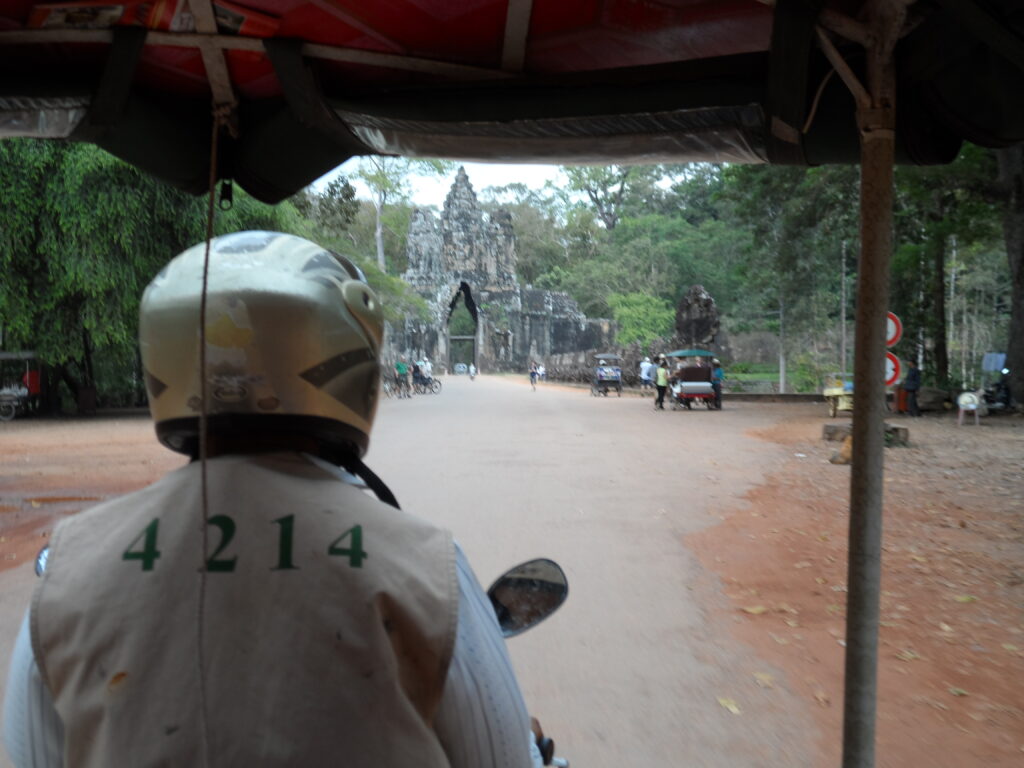
Siem Reap Cambodia is well-known around the world for the famed Angkor Wat, but one of the best surprises upon arrival in this incredible region is that Angkor is more than a single temple. In fact, the Angkor complex is spread out over 400 square kilometers, with many experts estimating there are still undiscovered ruins in the area.
Initial construction likely began on the greater complex around 900 AD. In the early years, the initial build focused on developing what would be considered an underlying city structure in modern times. Hydraulic structures, dykes, basins, and other waterways were combined with cleared roadways and acted as the lifeblood for the population. While there is no agreed upon expanse of Angkor, this infrastructure expanded to nearly 400 square miles, which makes it the greatest urban area in terms of size of ancient times. Another unique bit of knowledge is that experts estimate more stone is used in just Angkor than in all of the Egyptian sites combined.
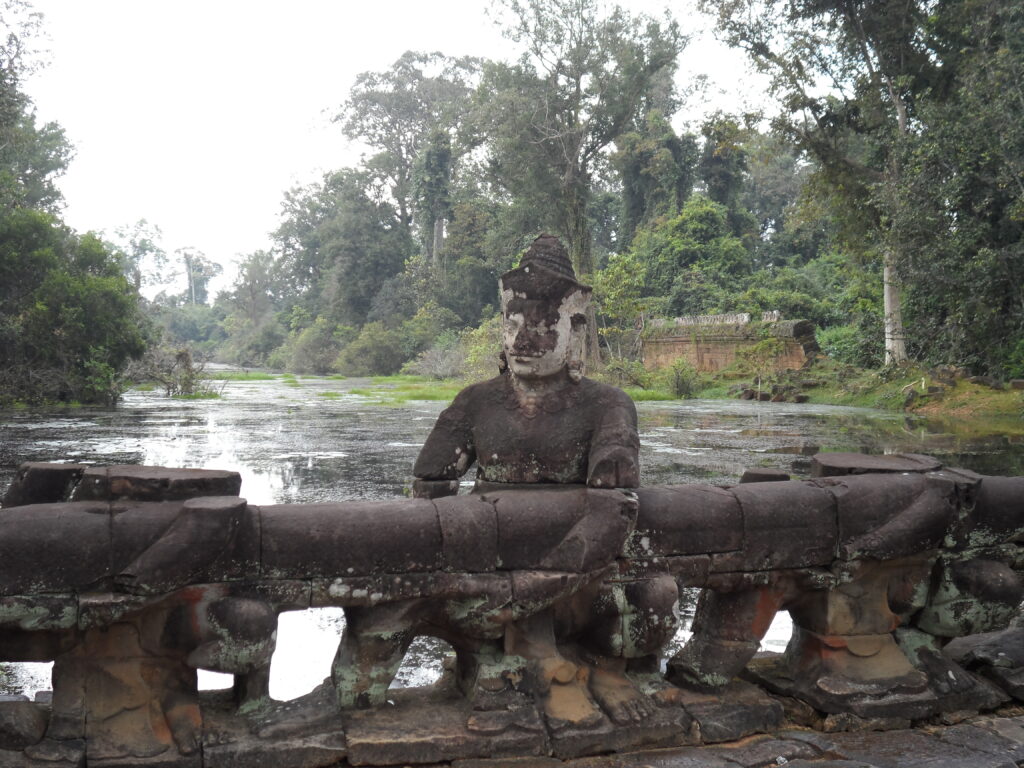
Two major compounds were developed over the years as the seat of power shifted between cultures. Angkor Wat was the first to be built between 1113-1150 by King Suryavarman II. He developed the temple in honor of the Hindu God Vishnu and modeled it after the mythical Mount Meru. Check out Capturing Ancient Cambodia Part I for an in-depth tour of this incredible site.
The second compound developed was Angkor Thom. With it only a few kilometers to the north, the physical distance between the developments is small, but the greatest difference between the two sites is that Angkor Thom was built to be Buddhist. The history of the twin developments goes back to the constant warring between populations in Southeast Asia. During the 12th century, the Cham people hailing from modern day Vietnam, were able to sack the capital at Angkor Wat. After the re-taking of the region by King Jayavarman VII, massive construction became the effort of the day. Angkor Thom became the new governmental and cultural center of the Khmer empire after its initial construction around 1200 AD.
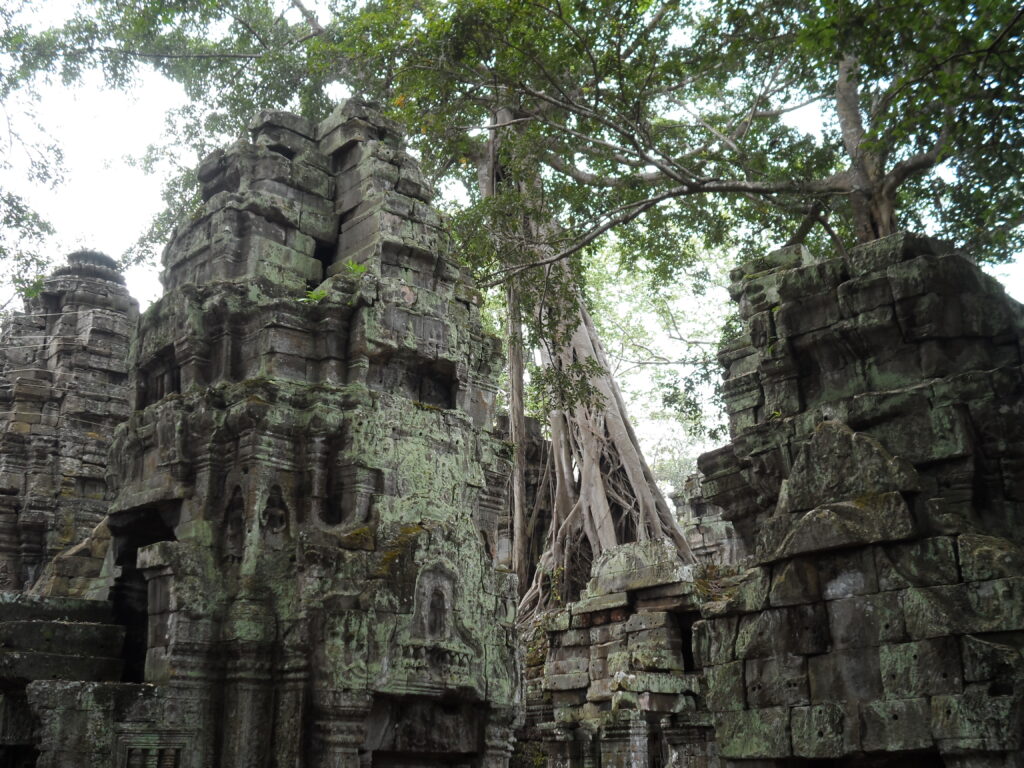
In addition to the structures included in Angkor Thom, King Jayavarman VII built some of the most well-known temples to date, Ta Prohm, Ta Som, and Preah Kahn.
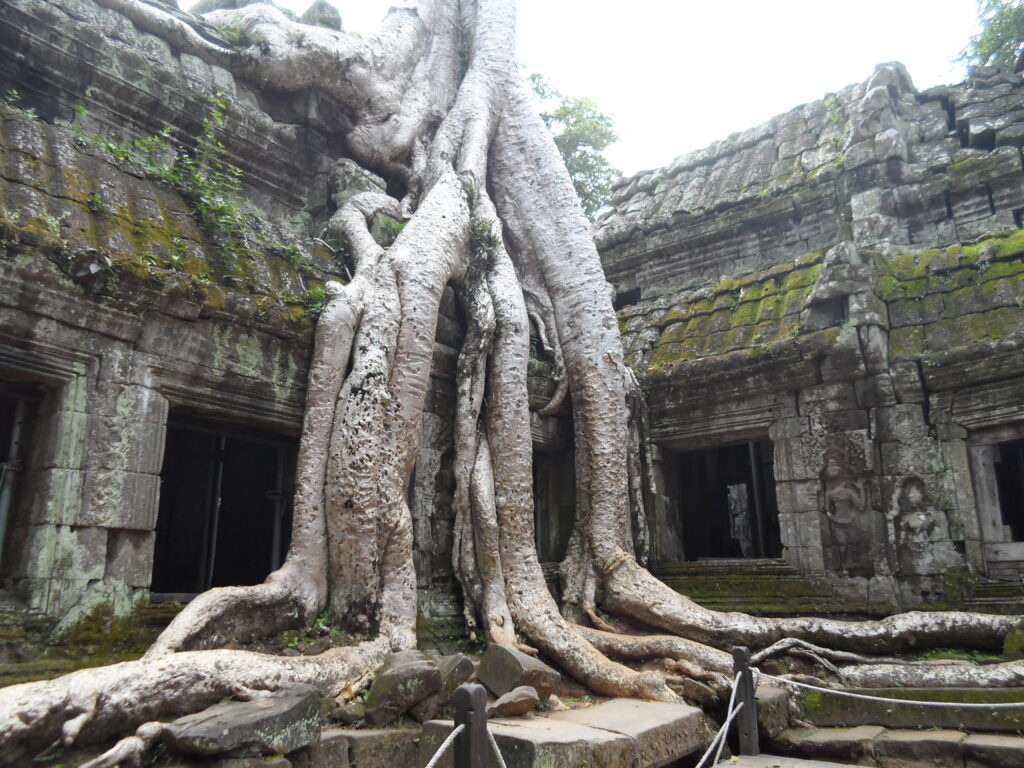
Ta Prohm was built in the late 12th and early 13th century. While included as part of the greater Angkor complex, it does not fall into the walled sites of Angkor Wat or Angkor Thom. Originally known as Rajavihara, Ta Prohm was built to honor King Jayavarman’s family. Historians believe the temple’s main image was modelled after the king’s mother.
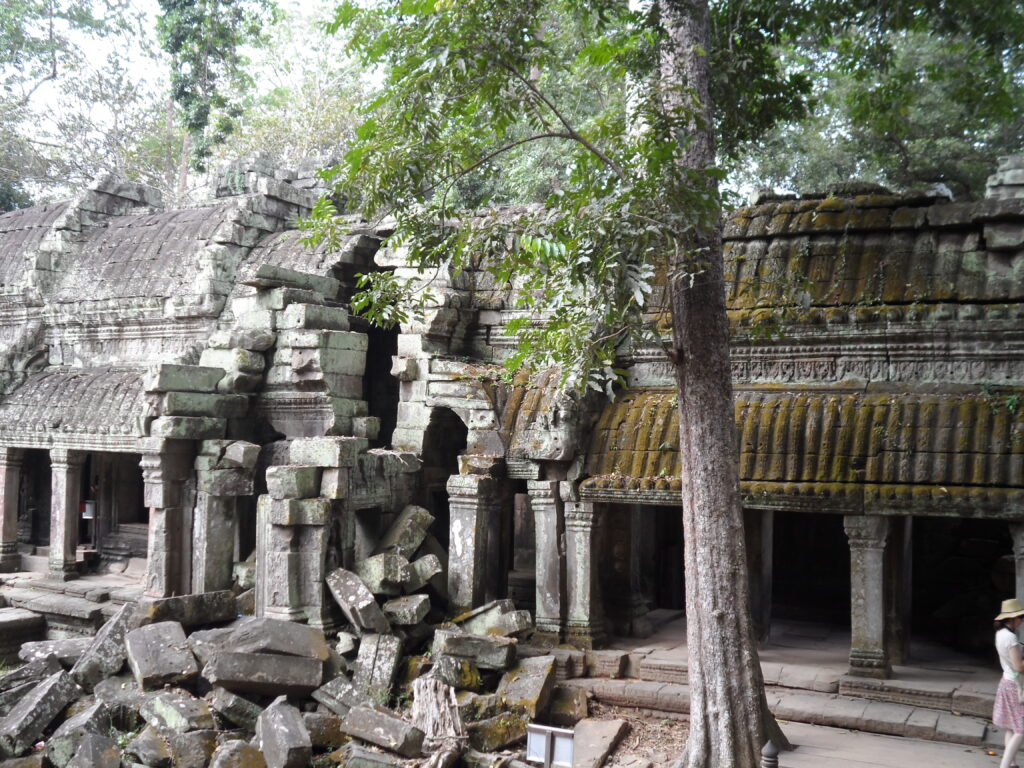
The temple has become increasingly popular to visitors because it is largely in the same condition as it was found. Massive trees have found life by weaving their ways around the thick walls. Much of the crumbling infrastructure has been left as is, to allow for an idea of the age of the site.
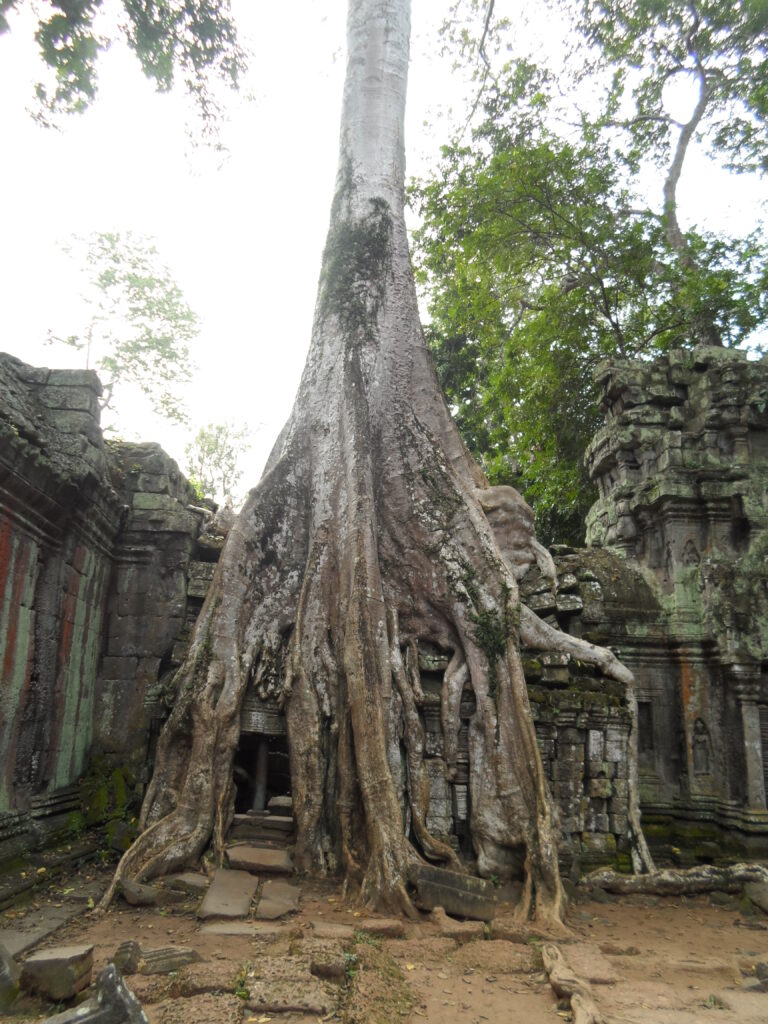
The incredible mixture of nature and man gives the entire temple a sense of congruency and balance. It also provides a stark reminder that nature will outlive man and its developments. Be advised, Ta Prohm is one of the most popular sites for tourism, so plan to see the site early in the morning if possible. Additionally, unlike the rest of the temples, because of its degraded nature, there are marked paths to explore the site (this adds to the crowding).
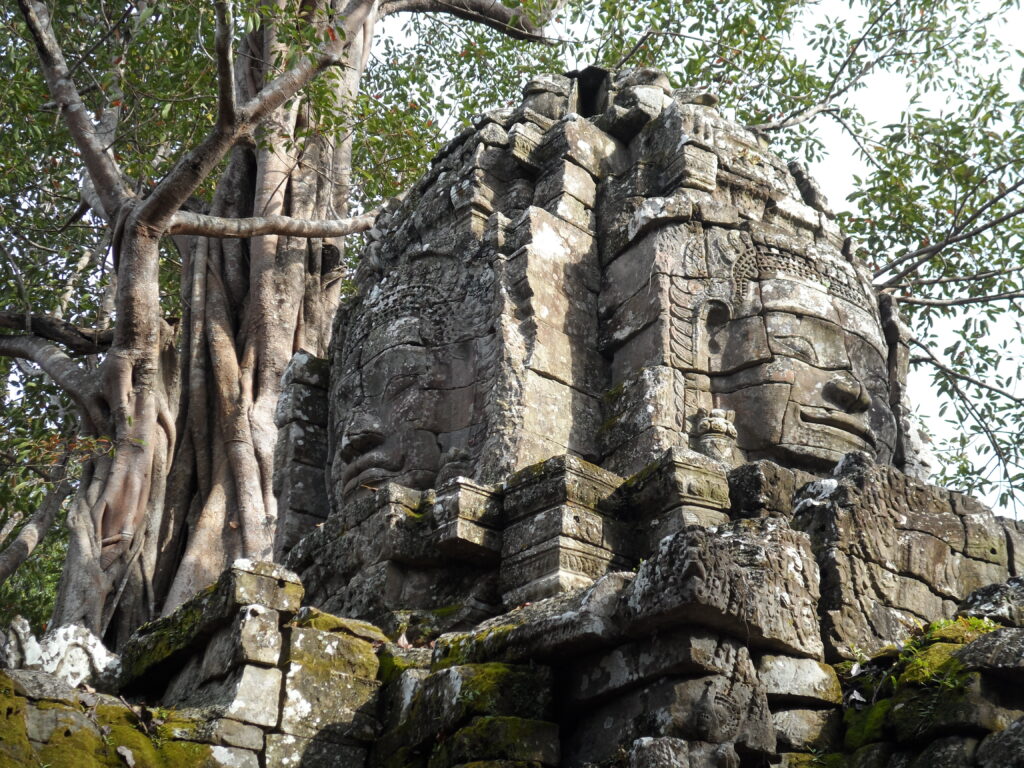
While Angkor Wat, Bayon (to be covered in the next blog), and Ta Prohm are the most popular locations, there are numerous other sites that have a considerably smaller tourist footprint. The temple Ta Som is one of the least traveled and allows for an opportunity to gain some isolation as you explore the site. One of the entrances provides a similar overgrown site as the neighboring Ta Prohm.
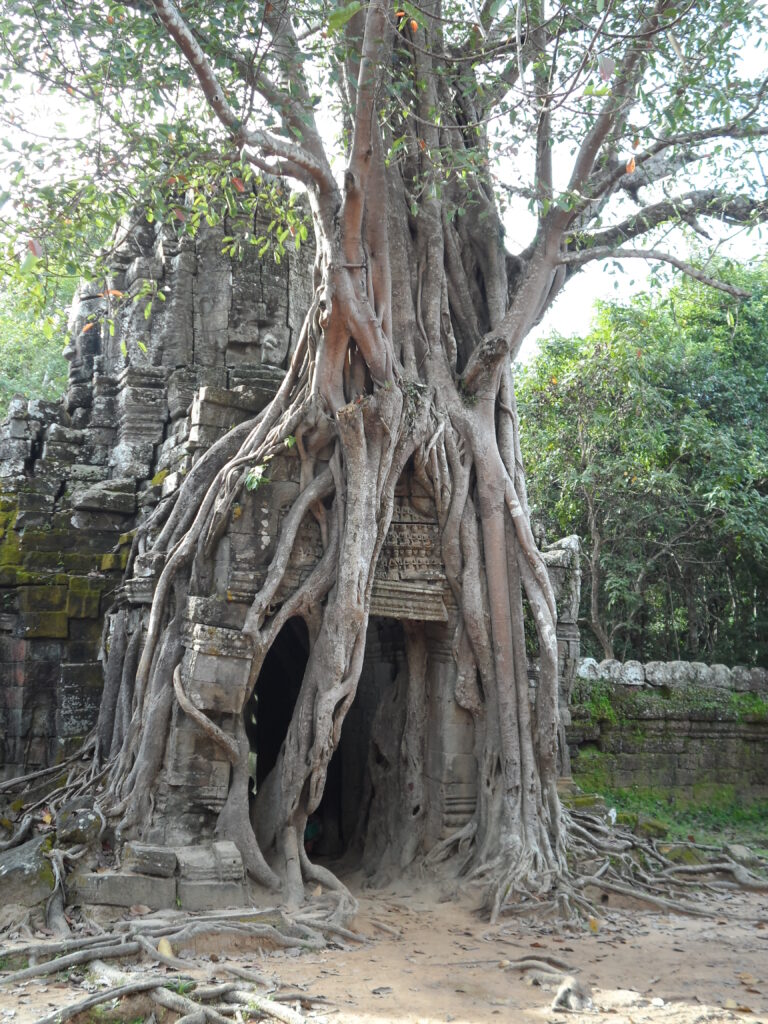
Ta Som was also developed under the guidance of King Jayavarman VII and was dedicated to a previous Khmer emperor. While a smaller temple when compared with the others in the complex, there are plenty of great designs to take in. A center temple is flanked by two small libraries on each side. Most locations have people willing to walk you through the temple, for a small fee of course, if you have a desire to learn more (no independent fact checking was done of their stories.) Just beware that there will be many people offering so be prepared to politely brush off advances if you desire time alone.
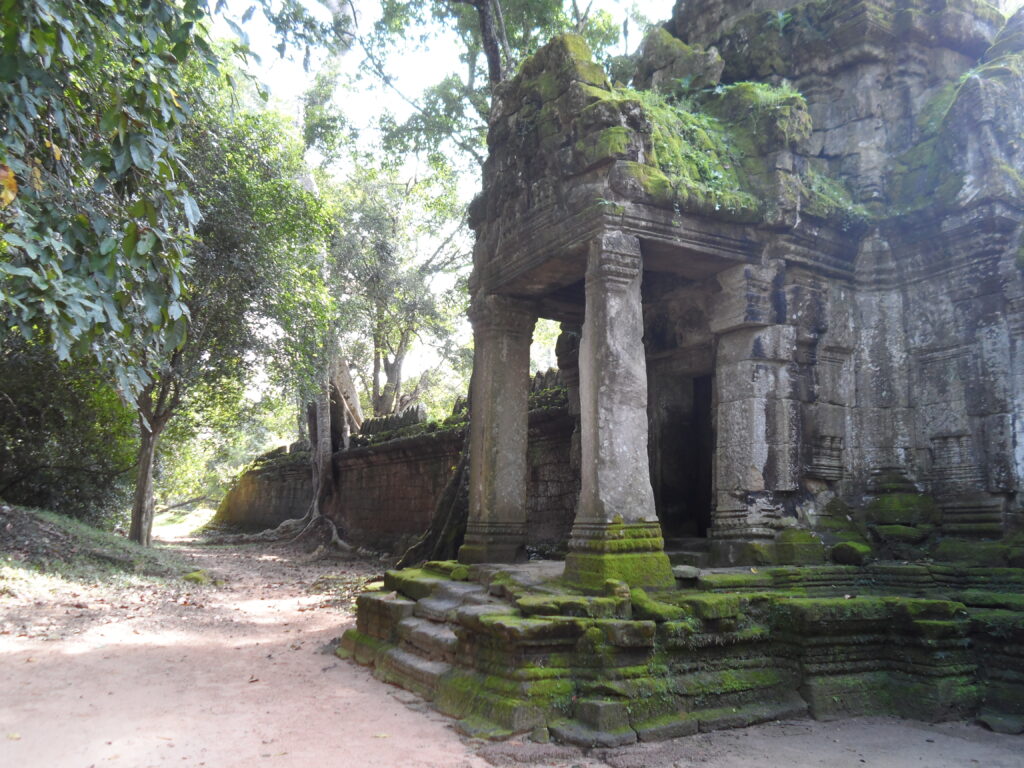
Located just to the north of the Angkor Thom walls is Preah Kahn. Developed in the late 12th century, the temple was built on the site of King Jayavarman’s victory over the Chams. One of the primary designs is modeled after the king’s father, much like Ta Prohm had been designed for his mother. In a similar vein to Ta Prohm, the stonework has largely been left as found. Crumbled walls and overgrowth on sides of the complex are common. Another interesting part of Preah Kahn is it’s mix between Buddhist and Hindu reliefs. The main temple was built with Buddhist design as were all of King Jayavarman’s buildings. However, after his death Hinduism returned and many additional works were added.
Another point for adding Preah Kahn as a stop on an Angkor visit is its detailed interior design. Intricate designs circle each walkway entrance, known as lintels. Every wall has carvings that mark the inside, many of which are intended to tell the history of the time. At the center of the prayer locations are generally a small stupa similar to those found across this region of Asia.
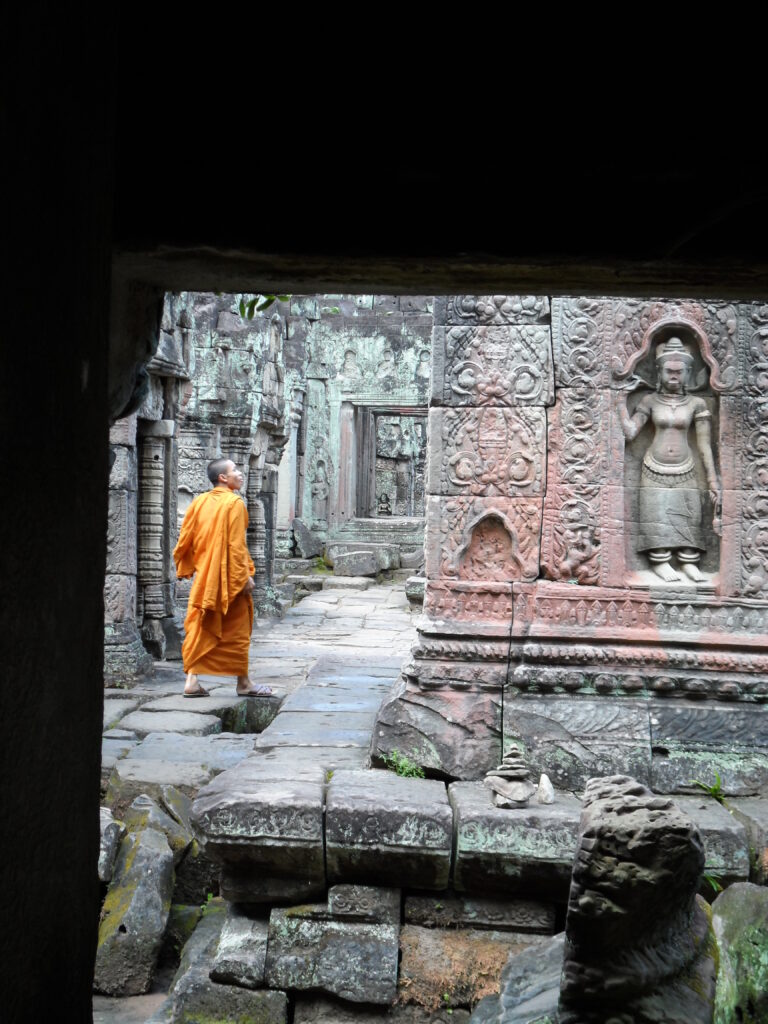
This is the second of a three-part blog on Cambodia’s famed Angkor complex. As I mentioned above, there are numerous temples that fill the complex and in no way can the site be fully seen in a single day’s visit. In the next blog, I will be highlighting the famed Bayon temple and other interior sites within Angkor Thom.
If you’re interested in checking out some the previous articles, travel to Nepal here, and here. Join my mailing list here to stay updated on travel and aviation updates and look for my next article on this must-see place.

Leave a Reply